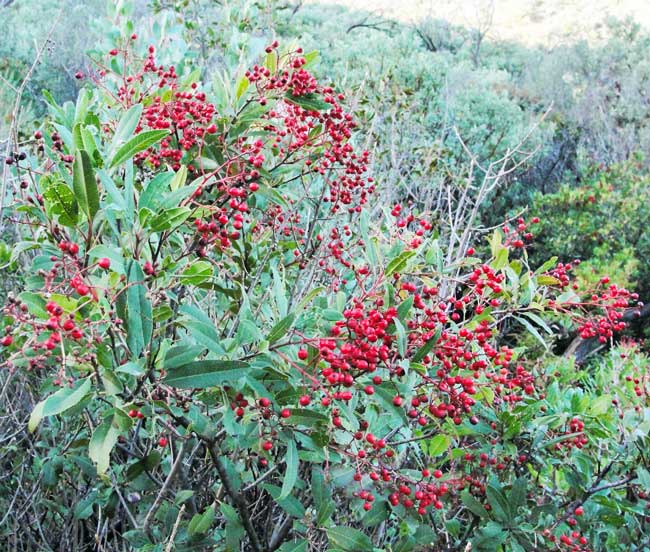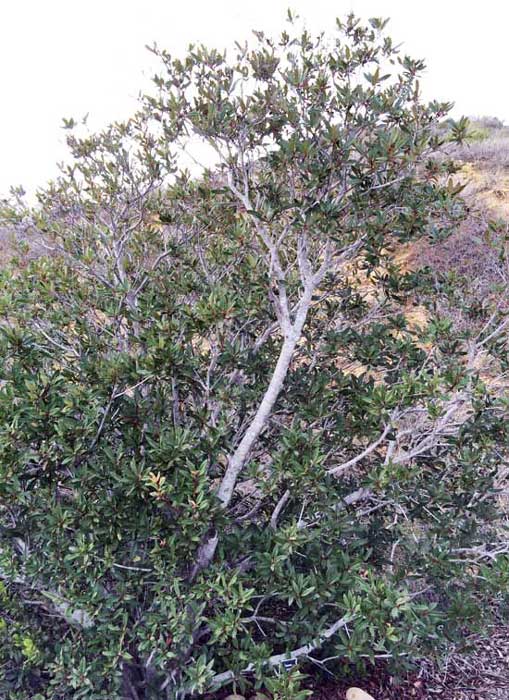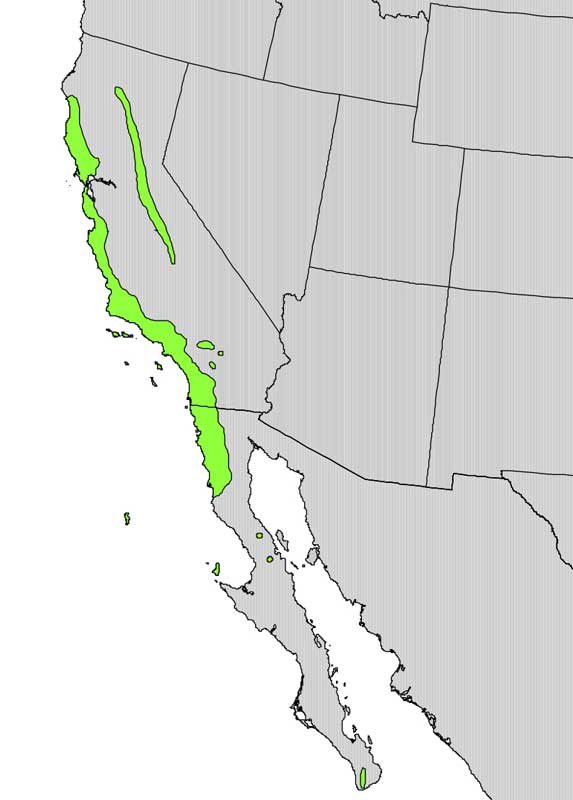Ethnobotany of southern California native plants:
Toyon (Heteromeles arbutifolia)

By Miguel Vieira from Walnut Creek, CA CC BY 2.0, via Wikimedia Commons
Bright red toyon berries were eaten by most Native American groups in southern California.

Tough, shiny foliage is common in the Rose family.
Toyon (Heteromeles arbutifolia)
The toyon is a shrubby tree that is native to California and Baja, Mexico. This prominent member of the Rose family (Rosaceae) can be found in the woodland, chaparral and coastal scrub plant biomes.
Toyon is also referred to as Christmas berry and California holly. Its shiny green foliage and bright red berries lend themselves well for Christmas wreaths and other holiday decorations. Due to this festive color scheme, toyon branches get clipped and brought back to many homes in California. In fact, the collection of these plants became such a common occurrence that the State of California had to intervene. CA Penal Code 384a states that no persons in the state of California may collect toyon on public lands.
Flowers from the toyon are pollinated by local butterflies. The berry fruits were enjoyed by early human settlers and are still eaten by birds (mockingbirds, cedar waxwings) and mammals (coyotes, bears).
Toyon berries
The toyon berries (or pomes) were a favorite food for Native American tribes in southern California (fruits from the Rose family are called pomes). The Chumash, the Tongva, the Costanoan, the Luiseno, the Kumeyaay and the Cahuilla all collected and ate berries from the toyon tree.
This fruit could be dried and made into a jelly. The pulp could also be dried and then later cooked into a porridge or combined with seed flour to make pancakes. When eaten raw, the toyon berries have a pungent and bitter taste. To remedy this unpleasantness, early settlers would only pick the berries once completely ripe. These ripe berries were then exposed to heat before consumption – this had the benefit of softening the taste.
The Cahuilla and Costanoan Indians enjoyed eating cooked toyon berries. They also made an infusion from its bark and leaves, which was used to treat infected wounds. We now know that other species of berry also carry medicinal qualities. For example, white mulberry supposedly helps lower our blood-sugar levels, while black elderberry is routinely used to boost the human immune system.
The Costanoan people also created an infusion of toyon leaves. Young women took this infusion to help regulate menstruation.
The Luiseno people from the L.A. area also collected toyon berries. They then parched these berries in the sun to make them more palatable.
The Kumeyaay people prepared an infusion with toyon bark and leaves. This infusion was then used as a wash for infected wounds.
The Mahuna people ate the berries to help quench their thirst. It is assumed that the bitterness helped create saliva.

Geographic range map of toyon (Heteromeles arbutifolia).
EthnoHerbalist Guide to Quality CBD products
A cloud of confusion swirls around the CBD industry. Does this molecule do anything?
How do you distinguish between a crappy CBD brand and a quality brand. To address these questions, we put together this guide. We hope it helps!
References:
Hinton, Leanne 1975 Notes on La Huerta Diegueno Ethnobotany. Journal of California Anthropology 2:214-222 (p. 217)
Merriam, C. Hart 1966 Ethnographic Notes on California Indian Tribes. University of California Archaeological Research Facility, Berkeley (p. 373)
Please return to our main Ethnobotany of southern California page.
On our main ethnobotany page, we present a clickable list of the southern California native plants that became a part of the culture of Native Americans and early European settlers. These plants were used for medicine, food, shelter, drink, tools and art.
Warning: The information about plants on this website is intended for general educational purposes only. The author of this website accepts no responsibility for problems arising from the user’s misidentification, misuse, or use of plants. Please read the full TERMS associated with this website.
